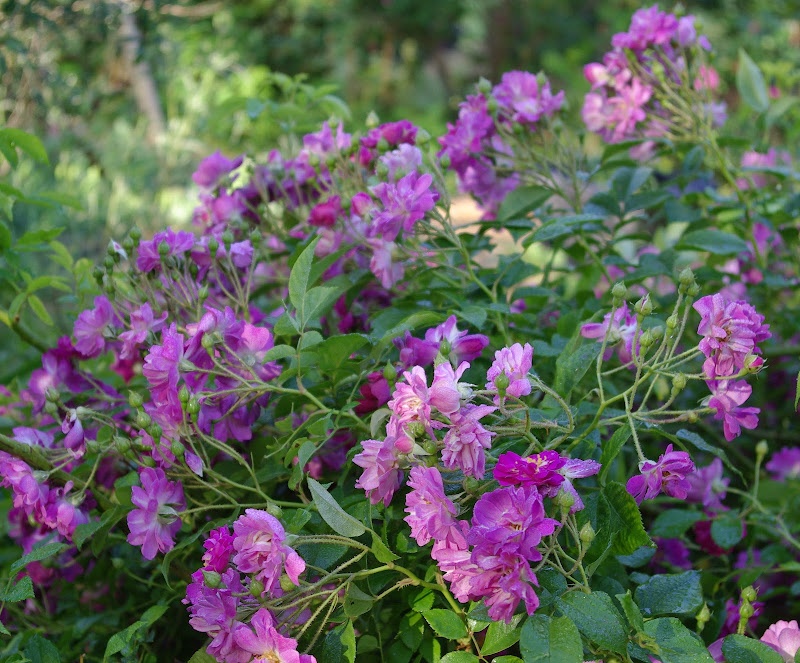Many of the daffodils are blooming, but I haven't taken many pictures because I am
still in the process of cleaning up the garden. It'll be a miracle if I get the garden cleared
before the main spring show, but in the meantime, the birds still love the cover.
So, back to the archives (cue strumming harp) ...
Soon after the house was moved and DH put in a new sidewalk I put in bearded iris next
to it. At a beautiful old house in Carrboro that had been turned into doctors' offices I
saw a line of daylilies and then of iris next to the sidewalk and thought how elegant that
arrangement was in its simplicity.
The pictures of the iris below are from April and May 2008 and 2010.
The iris were very successful the first year, and then they started quickly melting away over the next couple of winters. I believe a large part of the problem were voles laughing as they tunneled through the loose sandy soil and munched on the iris rhizomes. (Prissy was snug in her heated bed at the time; her resume would read "Excellent huntress. Hunts only under ideal conditions.")
I started adding spiderwort and foxglove to fill in the
gaps, but conditions were too hot and dry for the spiderwort.

gaps, but conditions were too hot and dry for the spiderwort.

Desperate times call for desperate measures. So I called upon -- Pink Showy Primrose.
Yes, the plant many know as a thug disguised as a princess in a lovely pink frock.

Yes, the plant many know as a thug disguised as a princess in a lovely pink frock.

I'd actually managed to kill pink primrose a couple of times and it languished by the vegetable garden for a few years before seeing an opening and taking off. What did I have to lose? After all, nothing else was doing all that well there, and I wanted something low-growing and spring blooming. So, in the primrose went, and it loved the sandy soil and spread everywhere.
Happily, other things have managed to co-exist with it, like Pink Muhly and Swamp Sunflower and Summer Phlox (added at the same time as the primrose ) and especially Bidens. Bidens didn't have any trouble coming up through it at all.
Besides the narcissus added for very early color, I also planted Allium sphaerocephalon after seeing it on some blogs. It has a rich black raspberry color and its effect lasts a long time, as it's beautiful both in bud and flower and opens over an extended period of time.
The final result in September and October was a bit tall and crowded. The sidewalk is narrow to start with, and with the hydrangeas on one side and Bidens on the other, it was difficult to get along the sidewalk when the plants were soaked with dew or rain without getting wet too. This, despite the fact that I cut back the plants several times. At least the overall effect was colorful. :)





























































